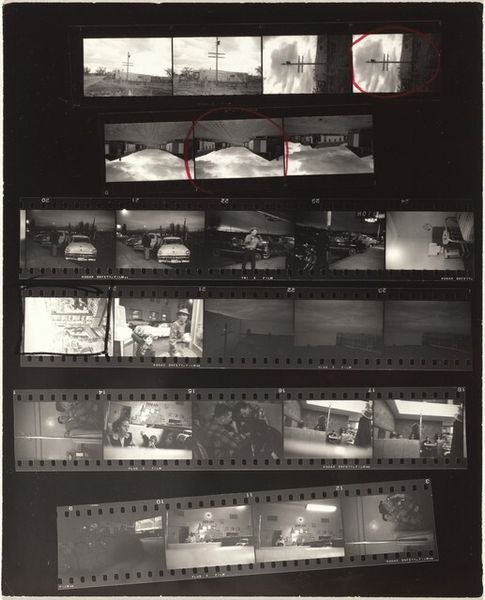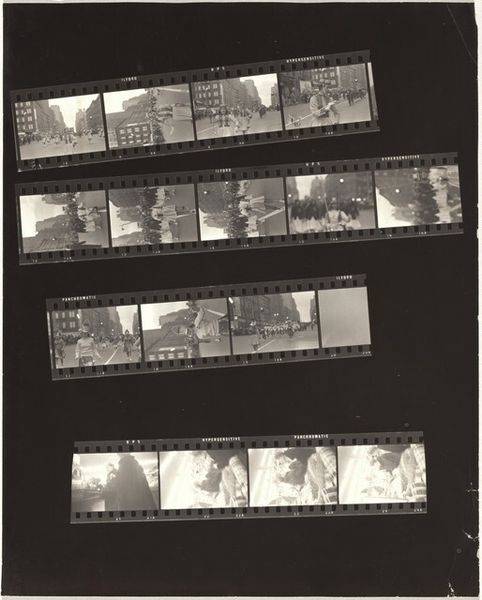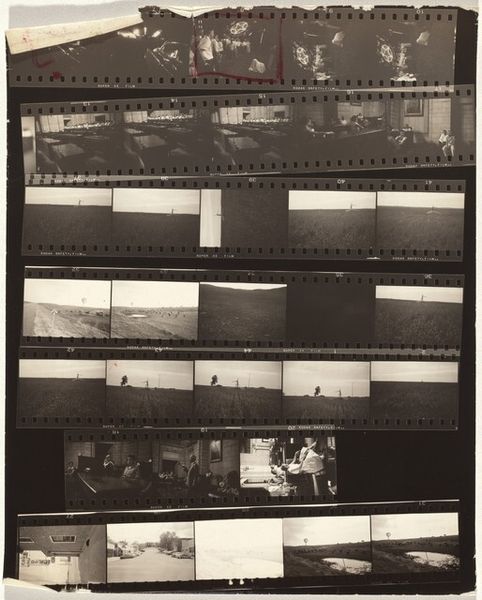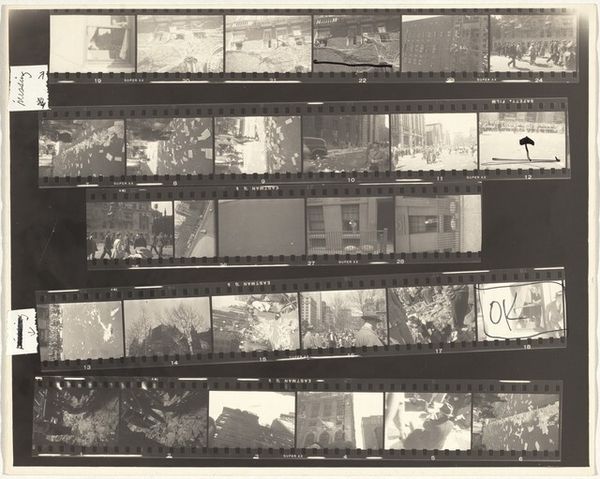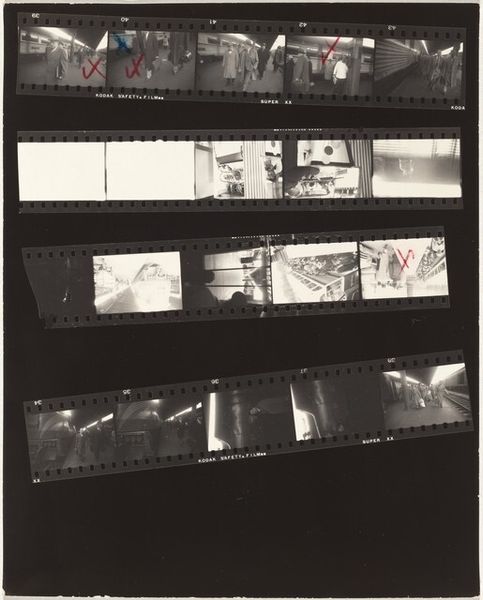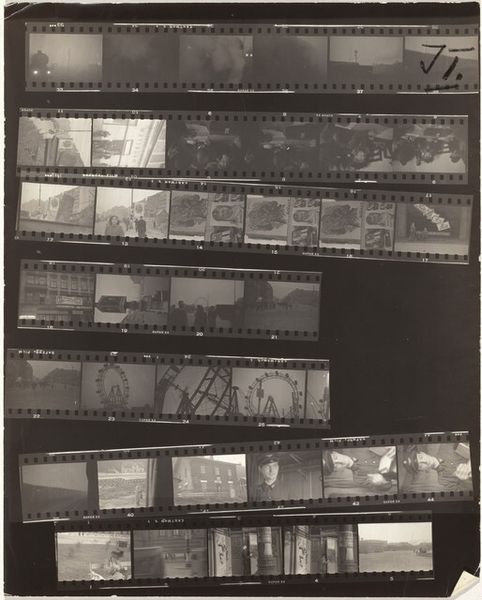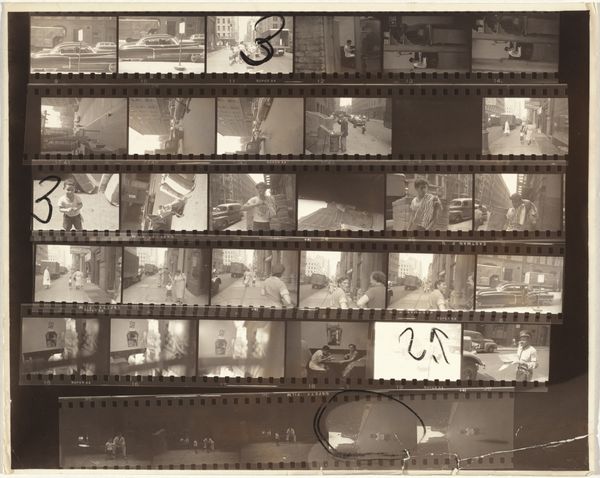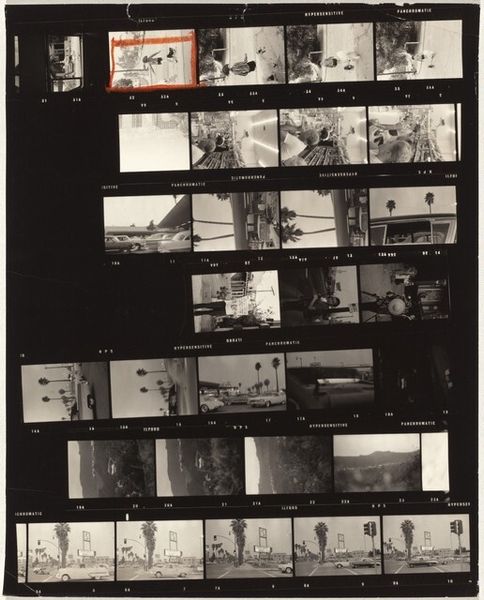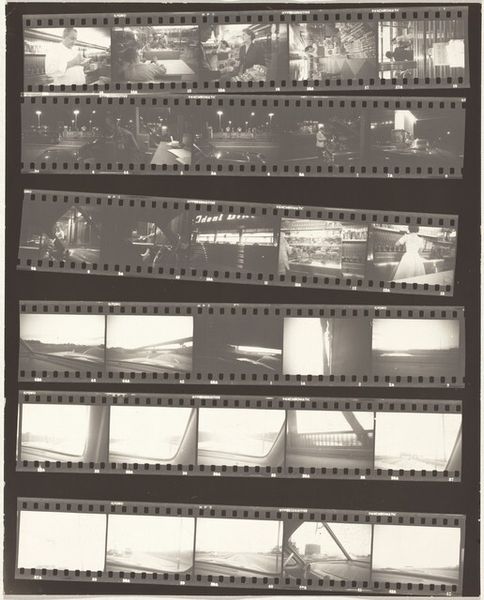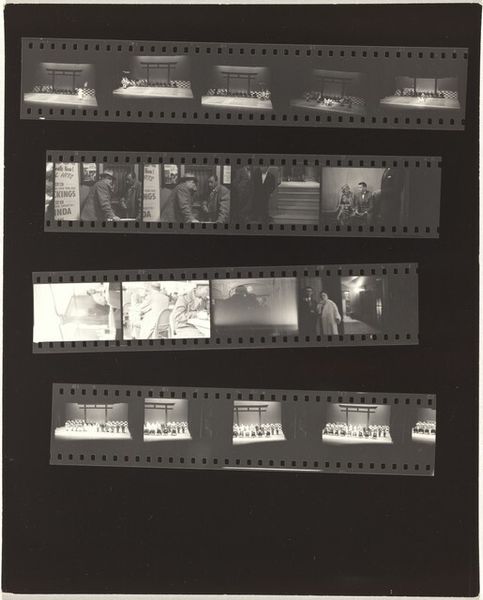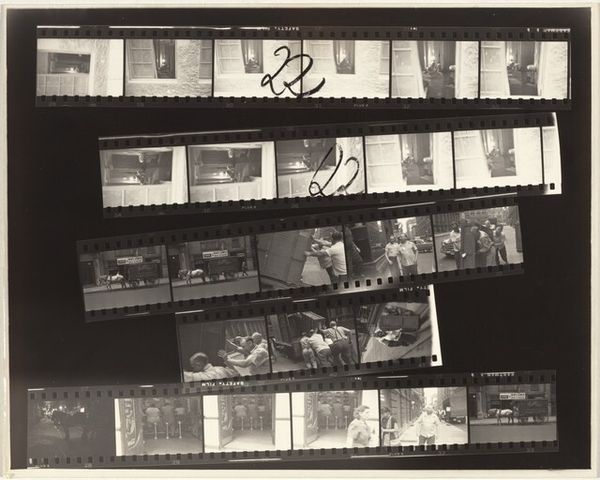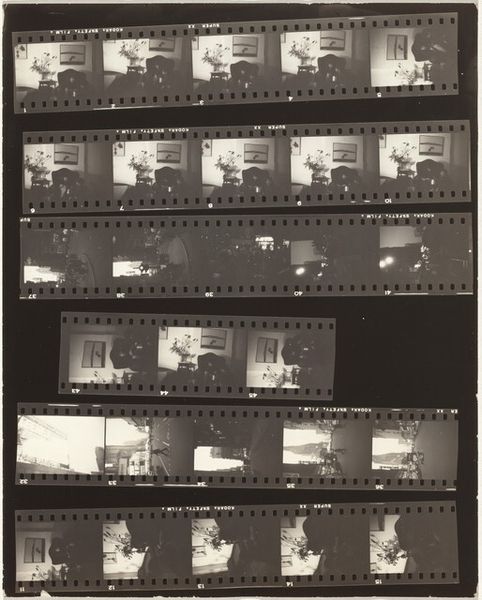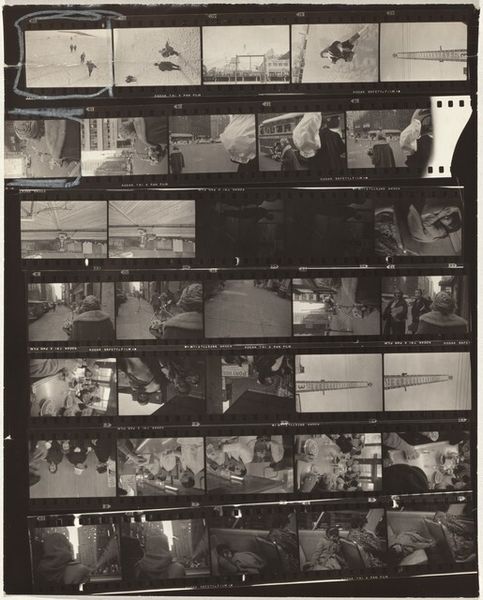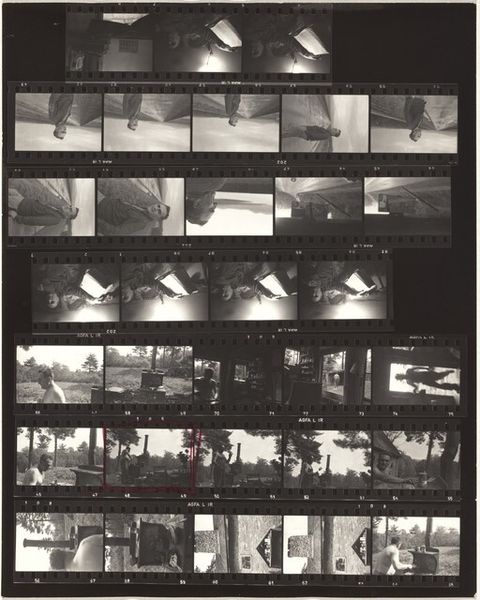
Dimensions: overall: 25.3 x 20.5 cm (9 15/16 x 8 1/16 in.)
Copyright: National Gallery of Art: CC0 1.0
Curator: Looking at Robert Frank's "Guggenheim 420--Los Angeles," made between 1955 and 1956, one is struck by the raw presentation of the filmstrip itself. It presents an unfiltered look at the artist's process. Editor: The immediate impression I get is one of fragmented narrative, or perhaps, interrupted stories. The grainy texture and stark contrasts contribute to a sense of detachment. It doesn't feel romantic or nostalgic to me, but something much more distanced. Curator: It is distant. This was part of his larger project, *The Americans,* and really captures a specific moment in American social and political life. The unedited nature exposes the deliberate act of witnessing but refuses to beautify it. This is Frank responding to the visual rhetoric being deployed in service of what he would view as corrupt, consumerist power. Editor: I find it intriguing how the artist uses the film strip format to present what seems like a commentary on postwar America and perhaps the distance from an idealized view of what it could and should be. What is Frank aiming to show about the realities and myths present? Curator: The reality of the road trip, a symbol in and of itself in terms of American promise, confronts these embedded myths through both their presence and also through absences in framing. In Frank’s rendering, cars are not merely objects but are reflections of social class and even racial divides. Editor: Right, I’m thinking of how the Guggenheim as a symbol of high culture intersects with the mundane everyday subject matter within this collection of frames. Are you proposing Frank may be challenging elitism while exposing his views of a kind of everyman America? Curator: Precisely. He’s blurring those boundaries, challenging preconceived notions, and perhaps democratizing art itself by stripping away pretense. Editor: Considering the social and cultural contexts of the time, the mid-1950s, this resonates as both documentation and social critique, particularly related to who and where Frank himself was within the structures of America. Thank you for giving new and intriguing ways of seeing this photographic gem. Curator: And thank you, for guiding my thinking towards its core as an image and for sharing ways for new audiences to consider its continued relevance in questioning systems today.
Comments
No comments
Be the first to comment and join the conversation on the ultimate creative platform.
